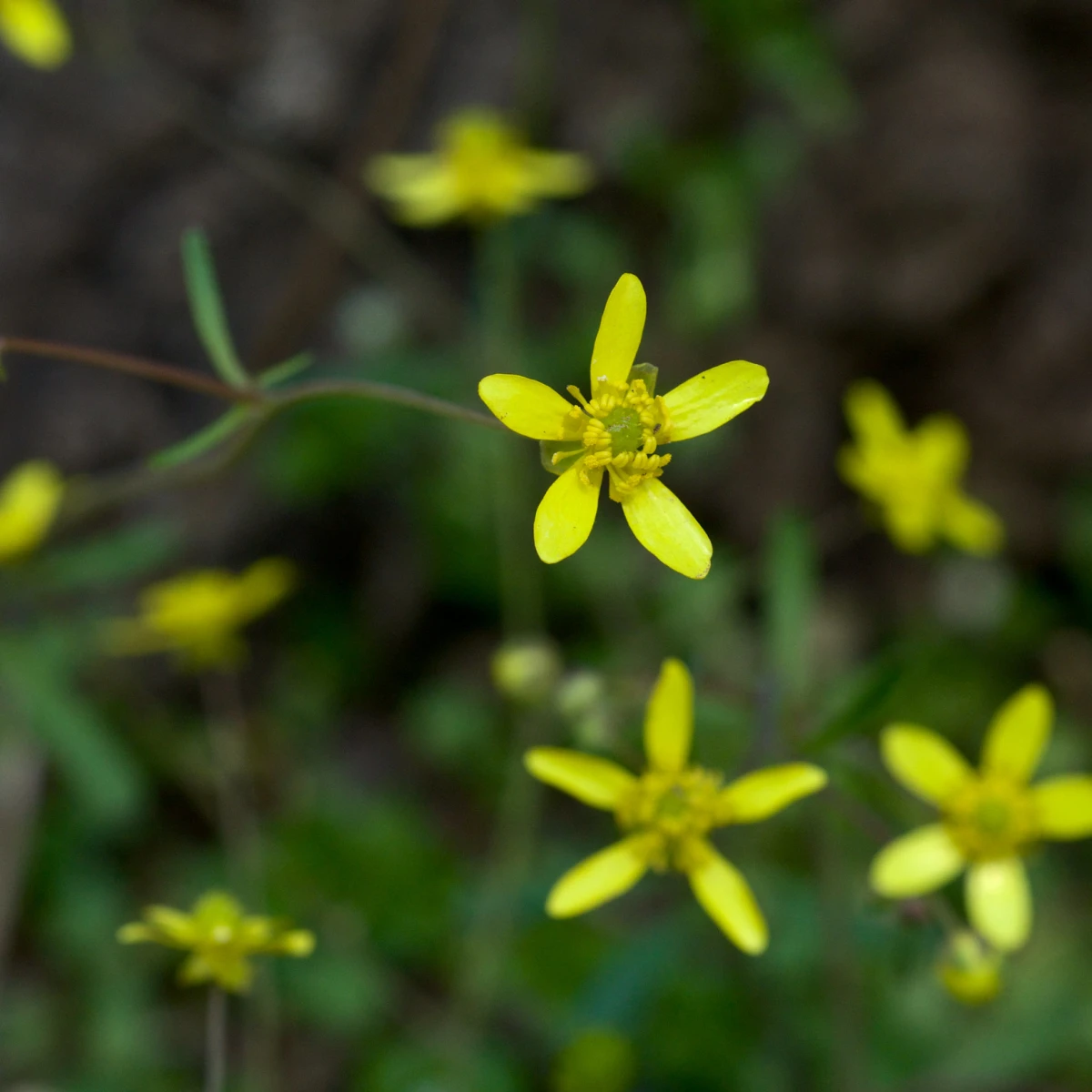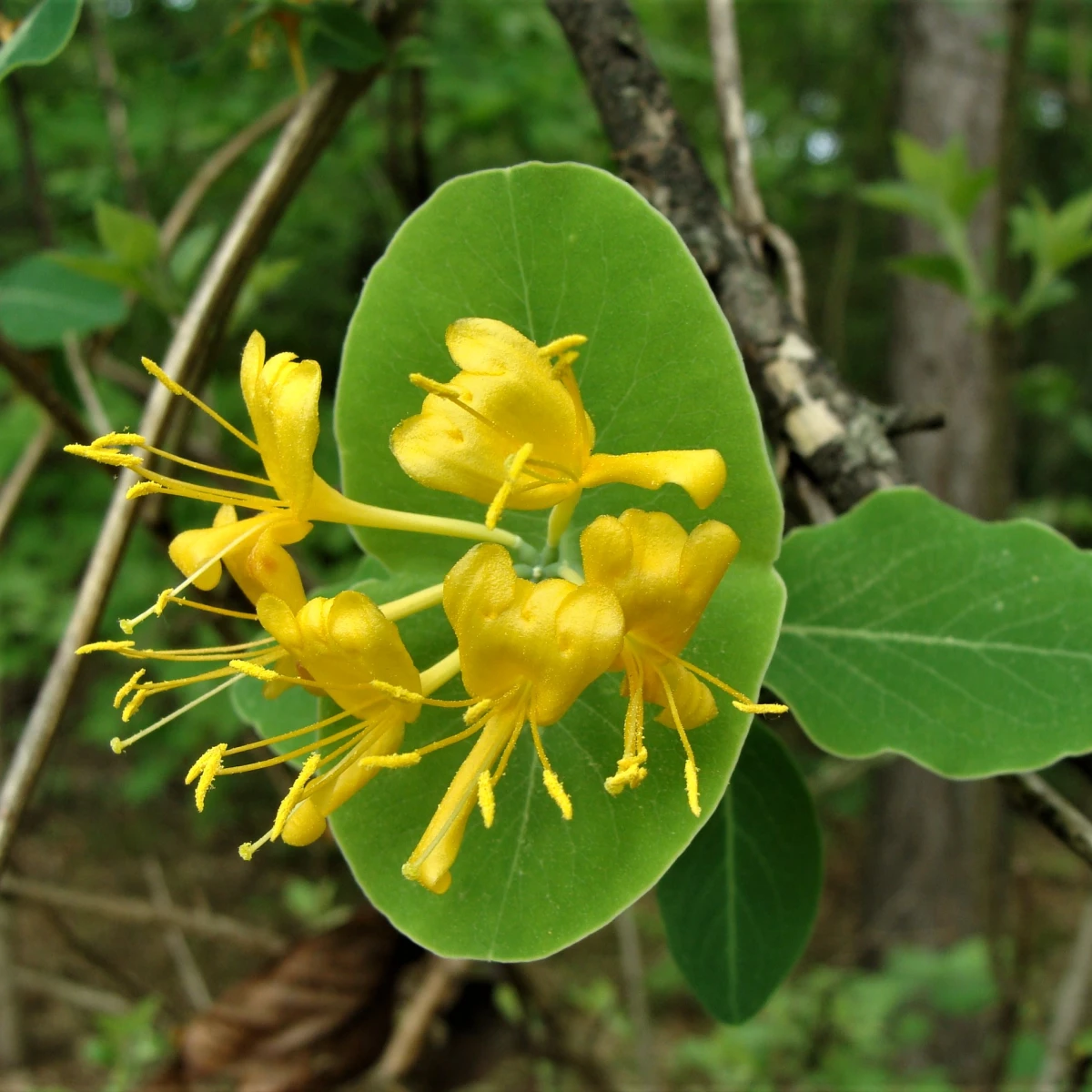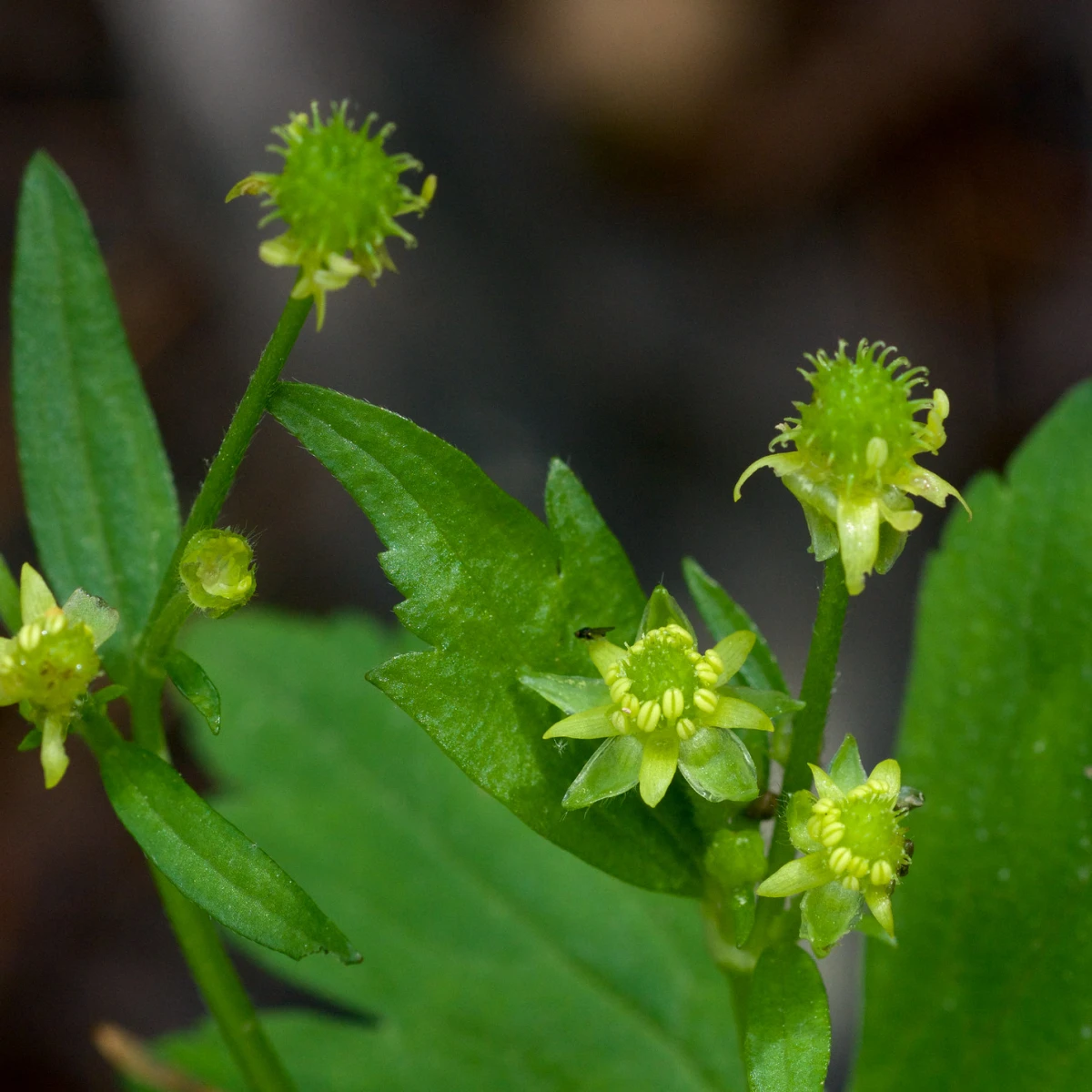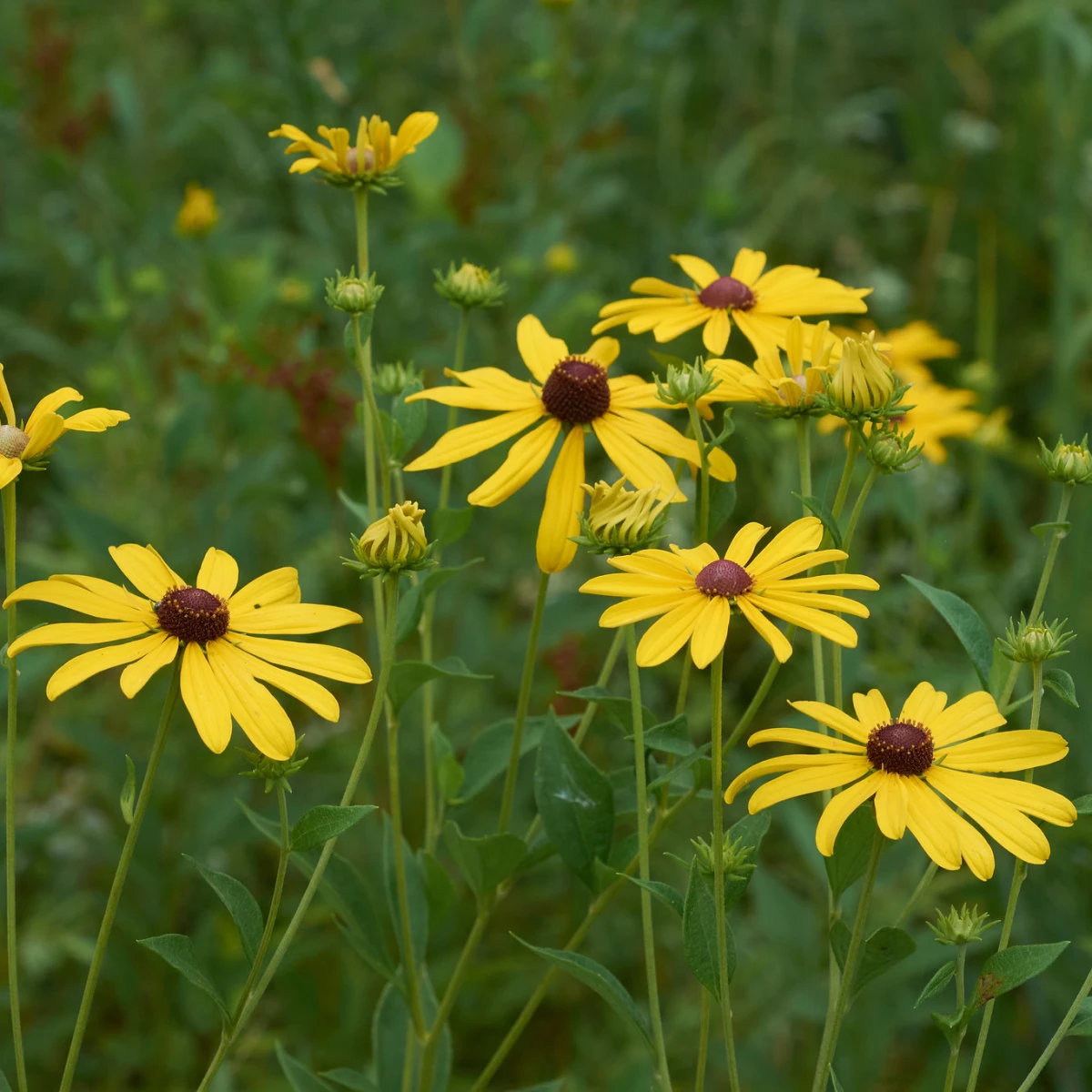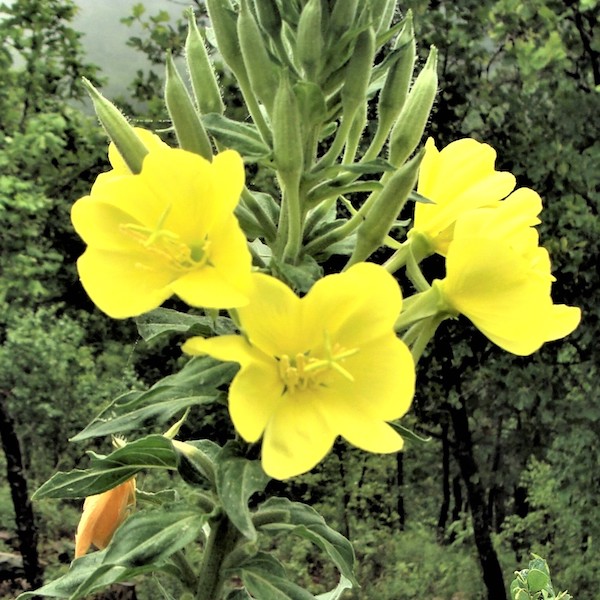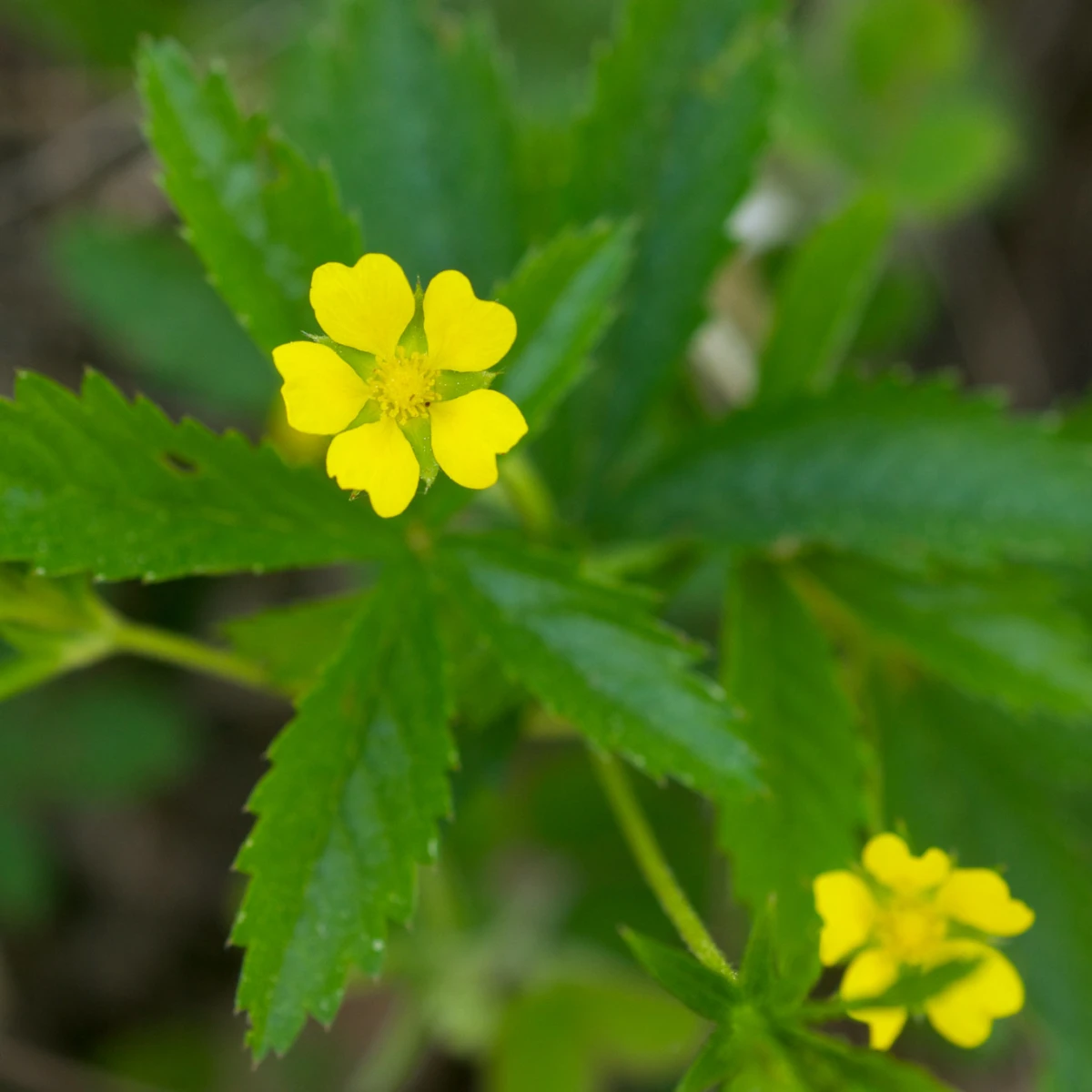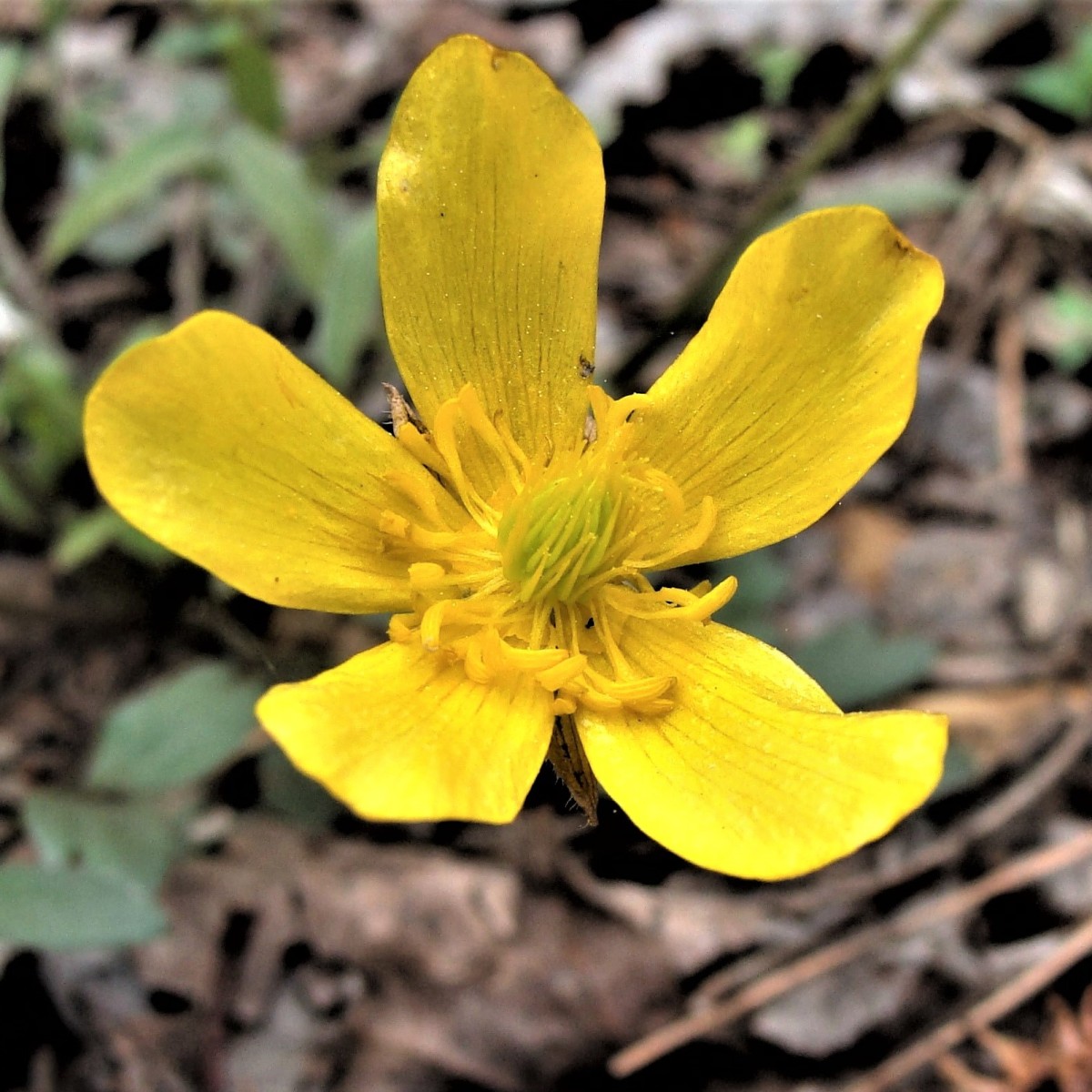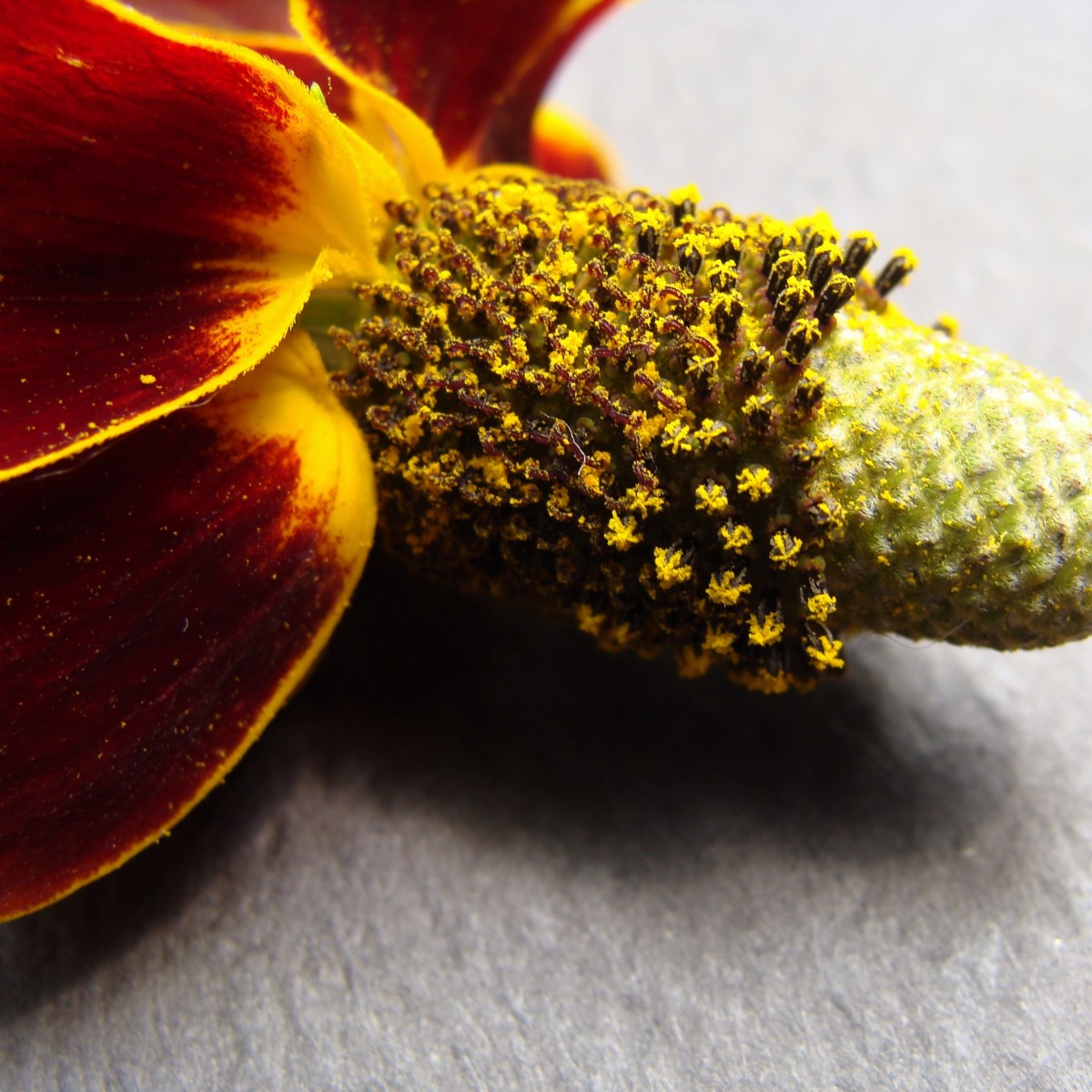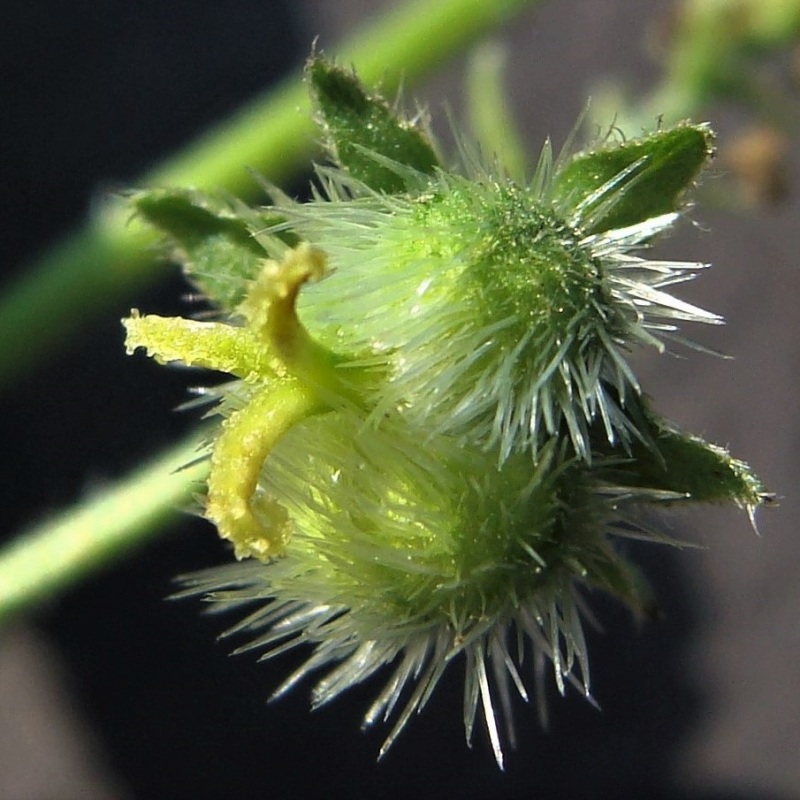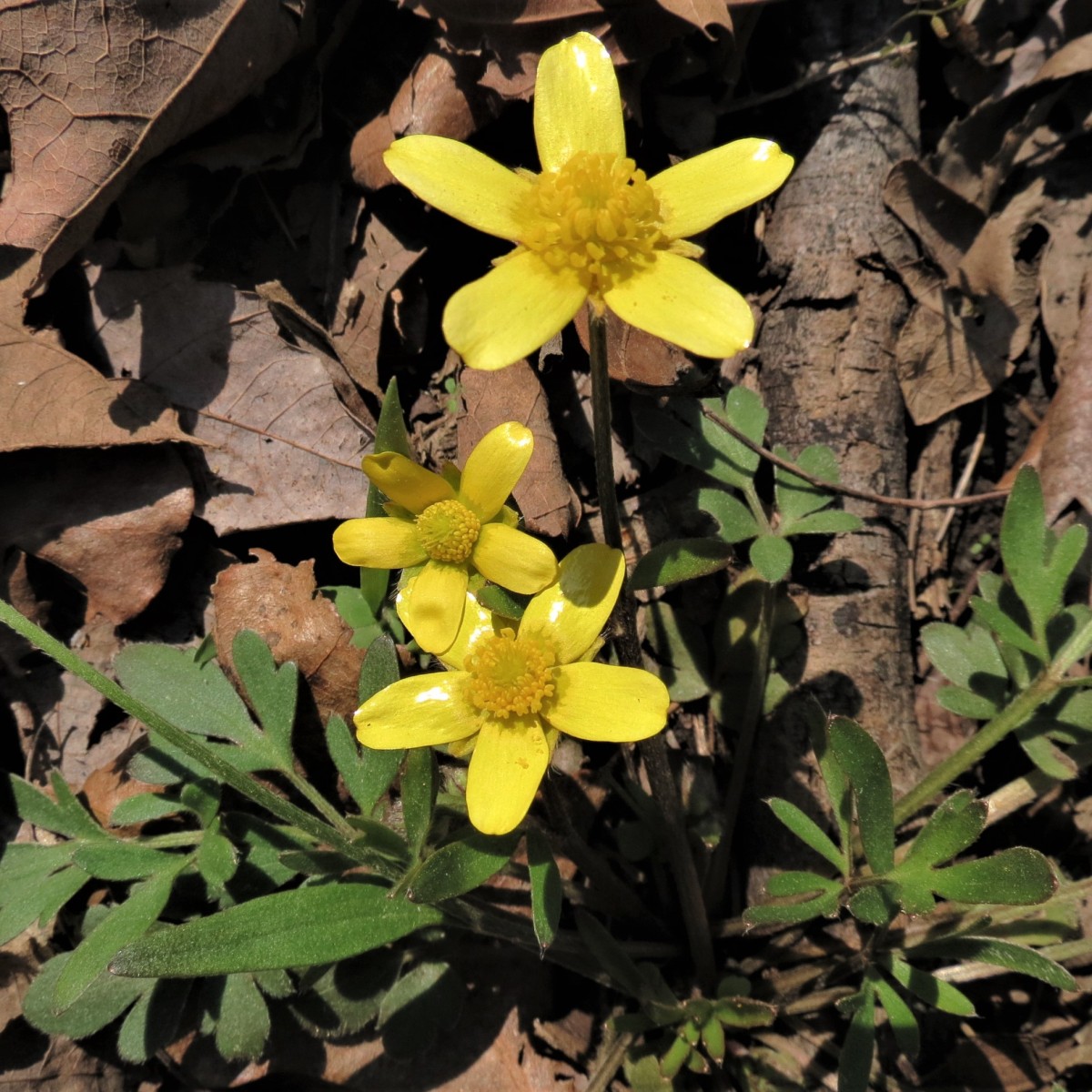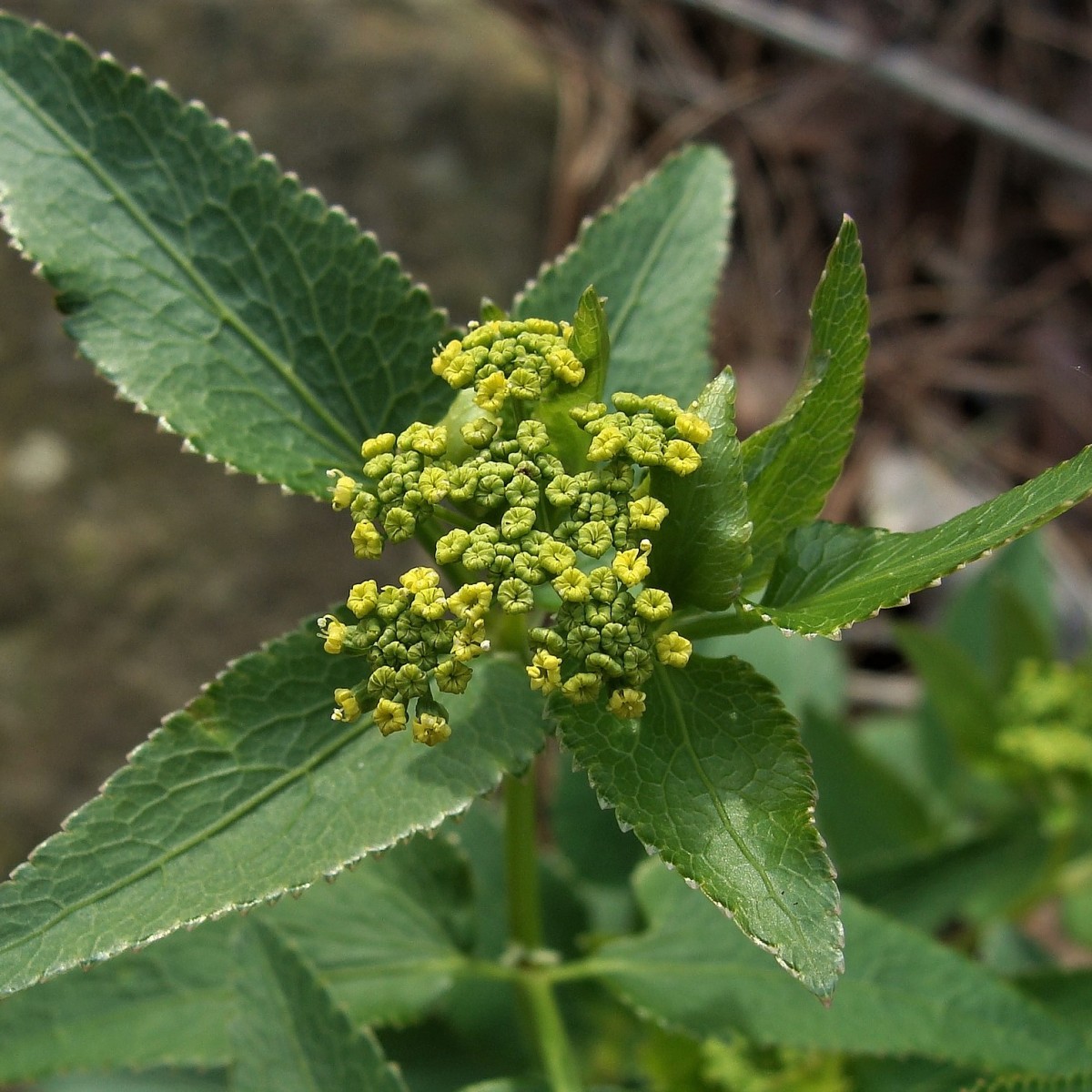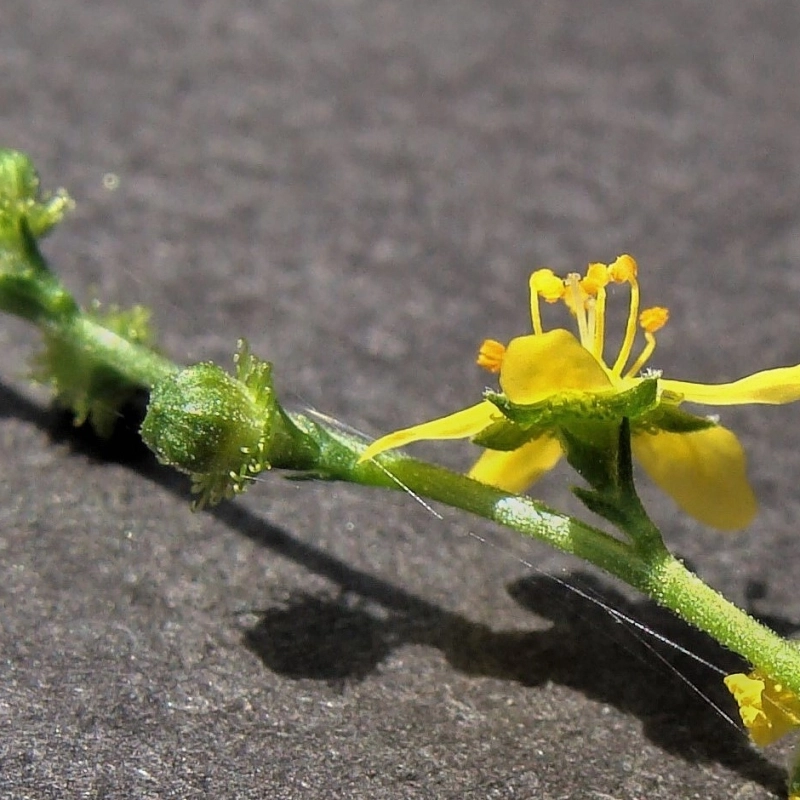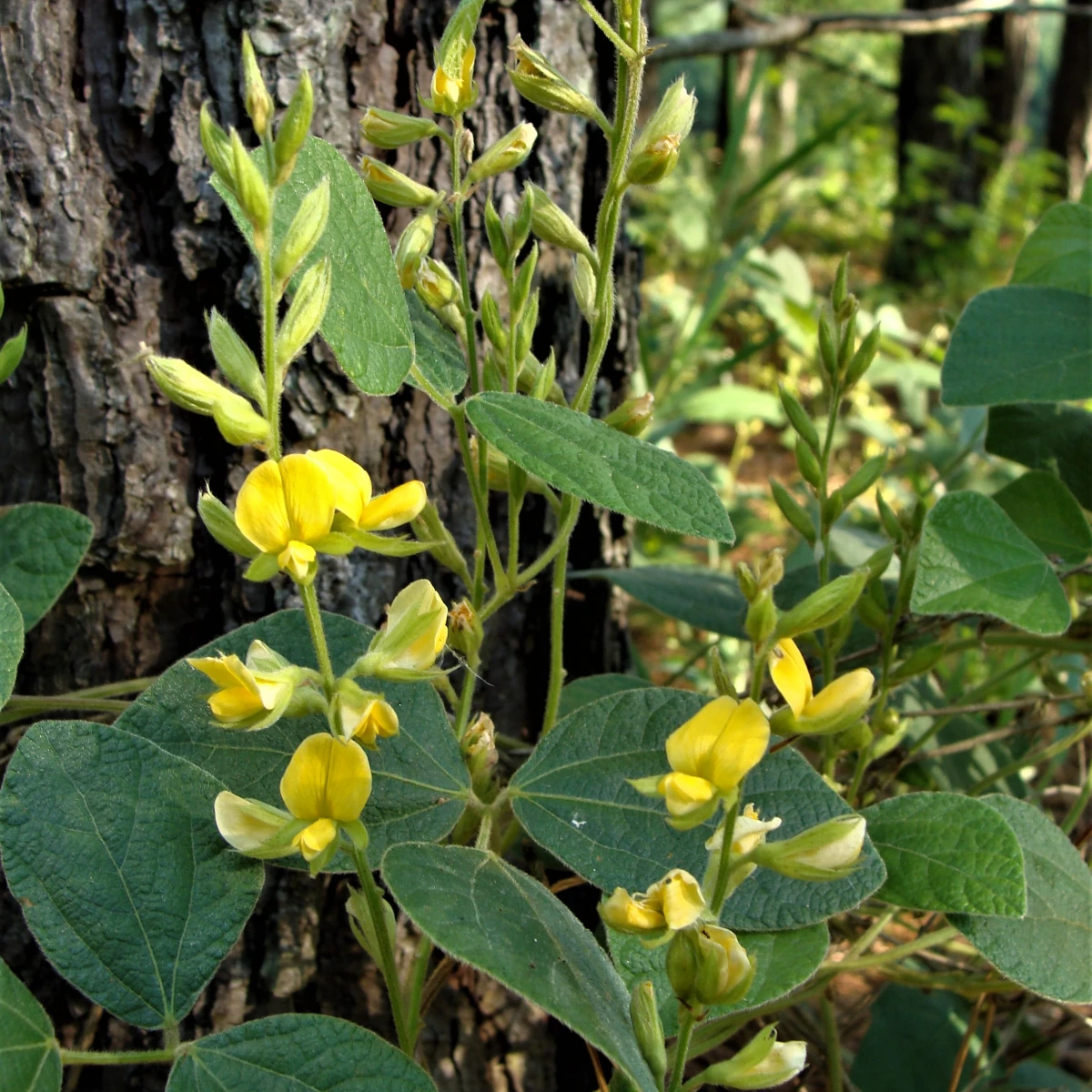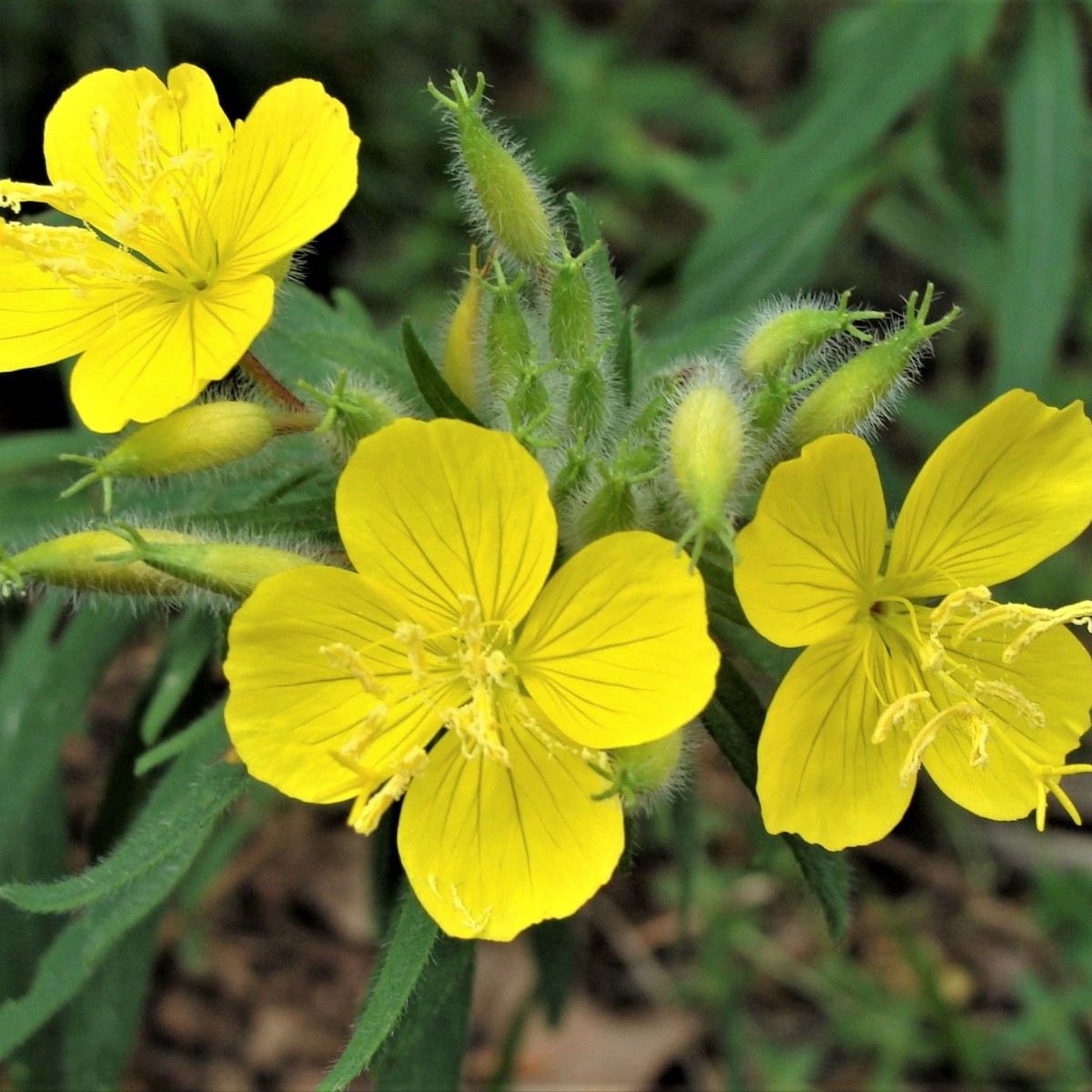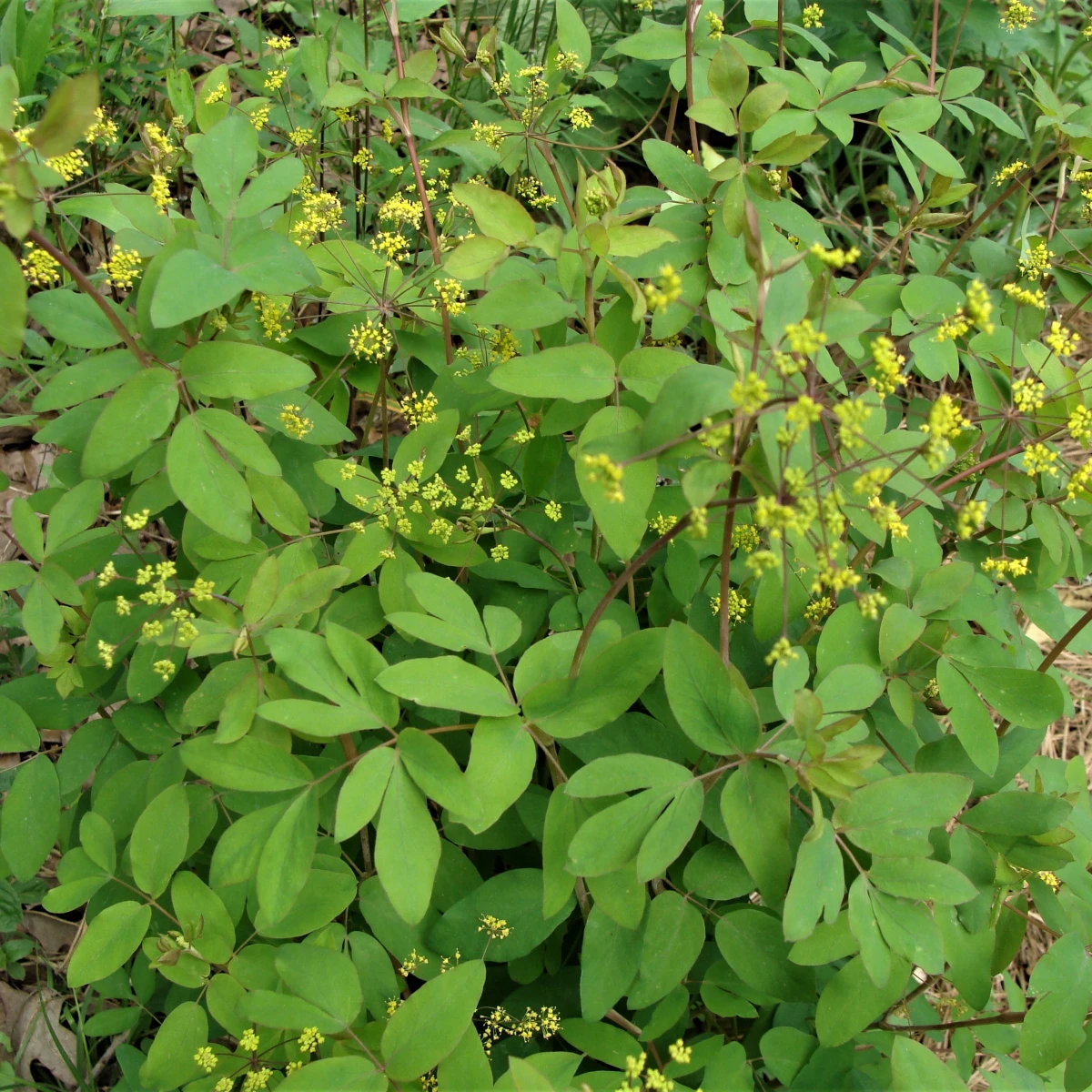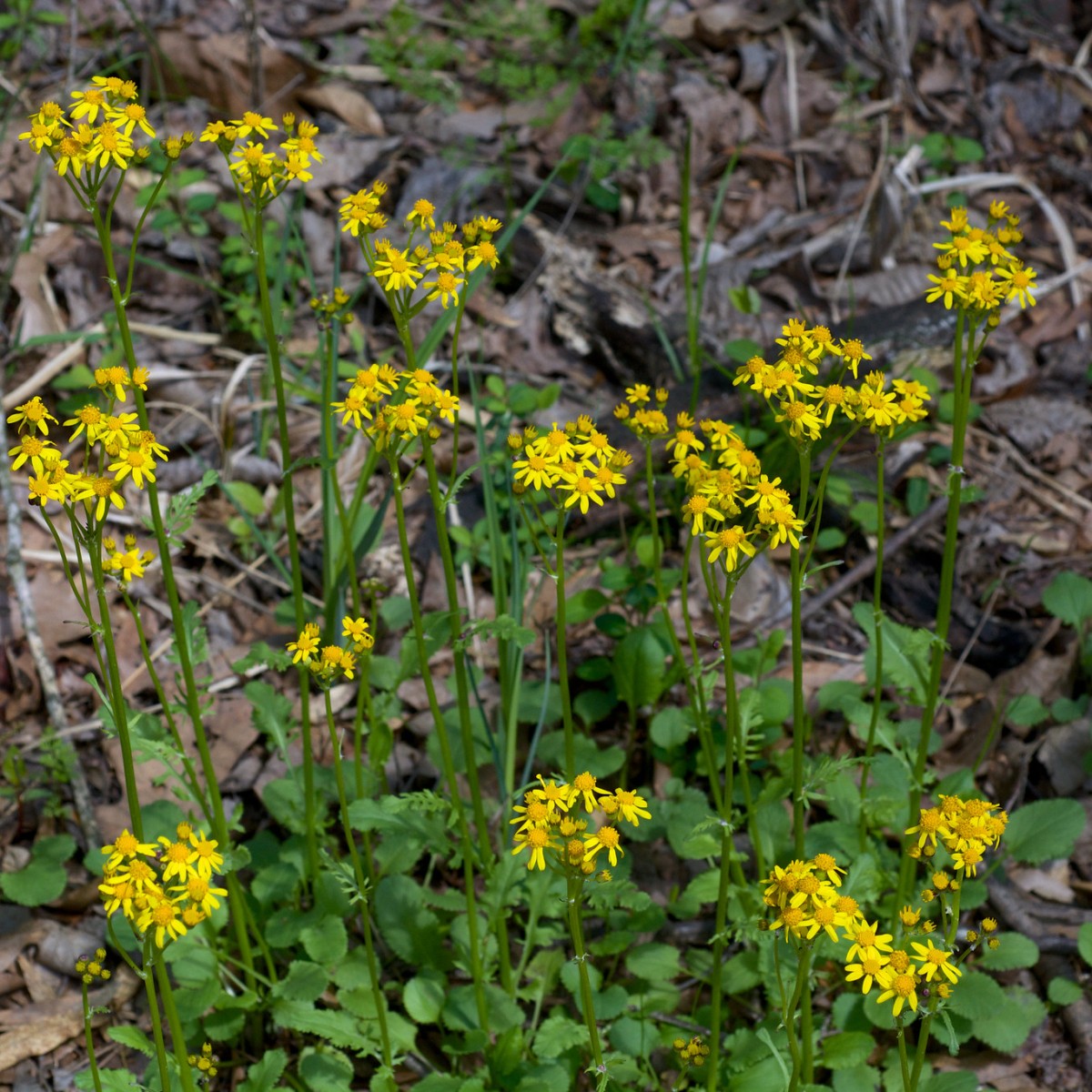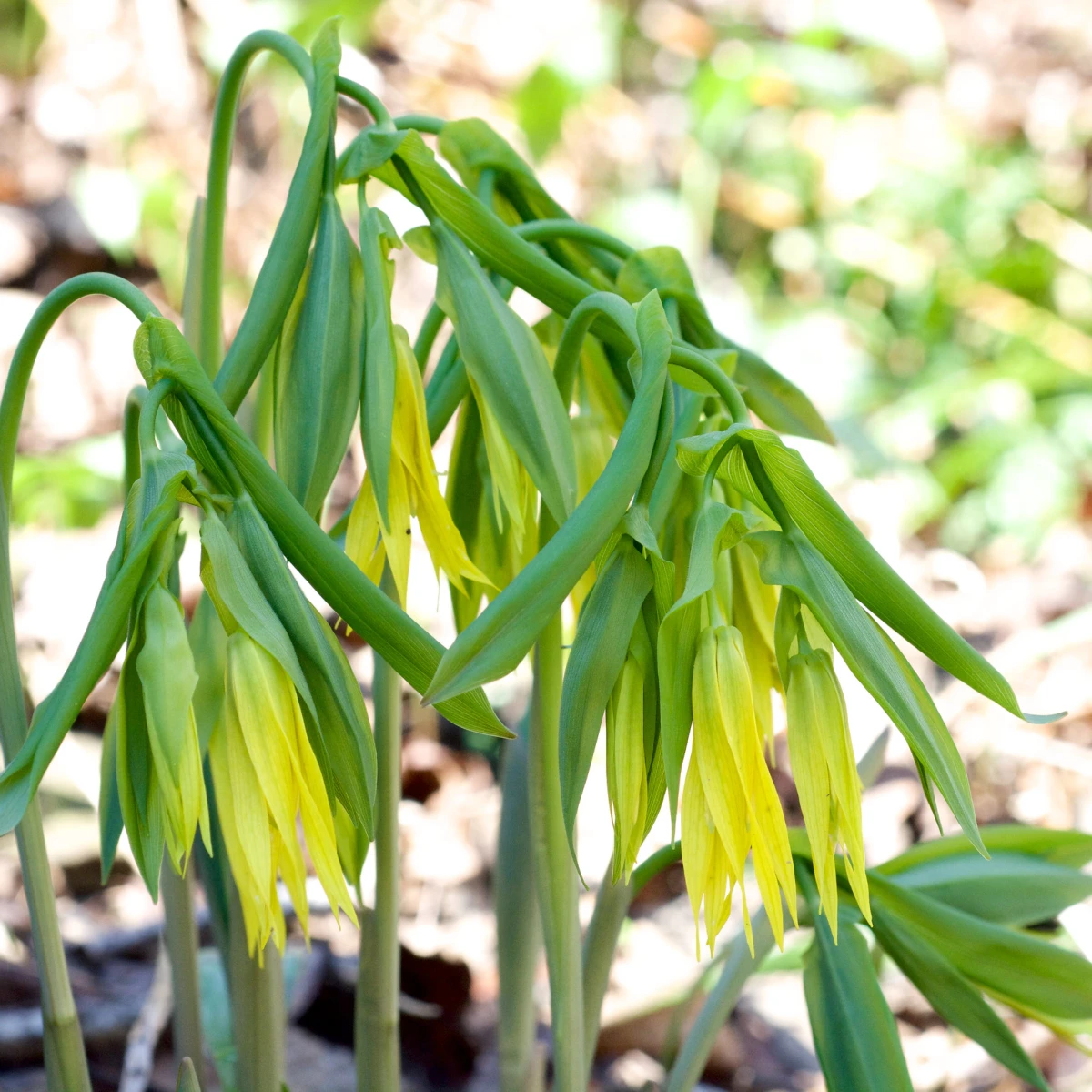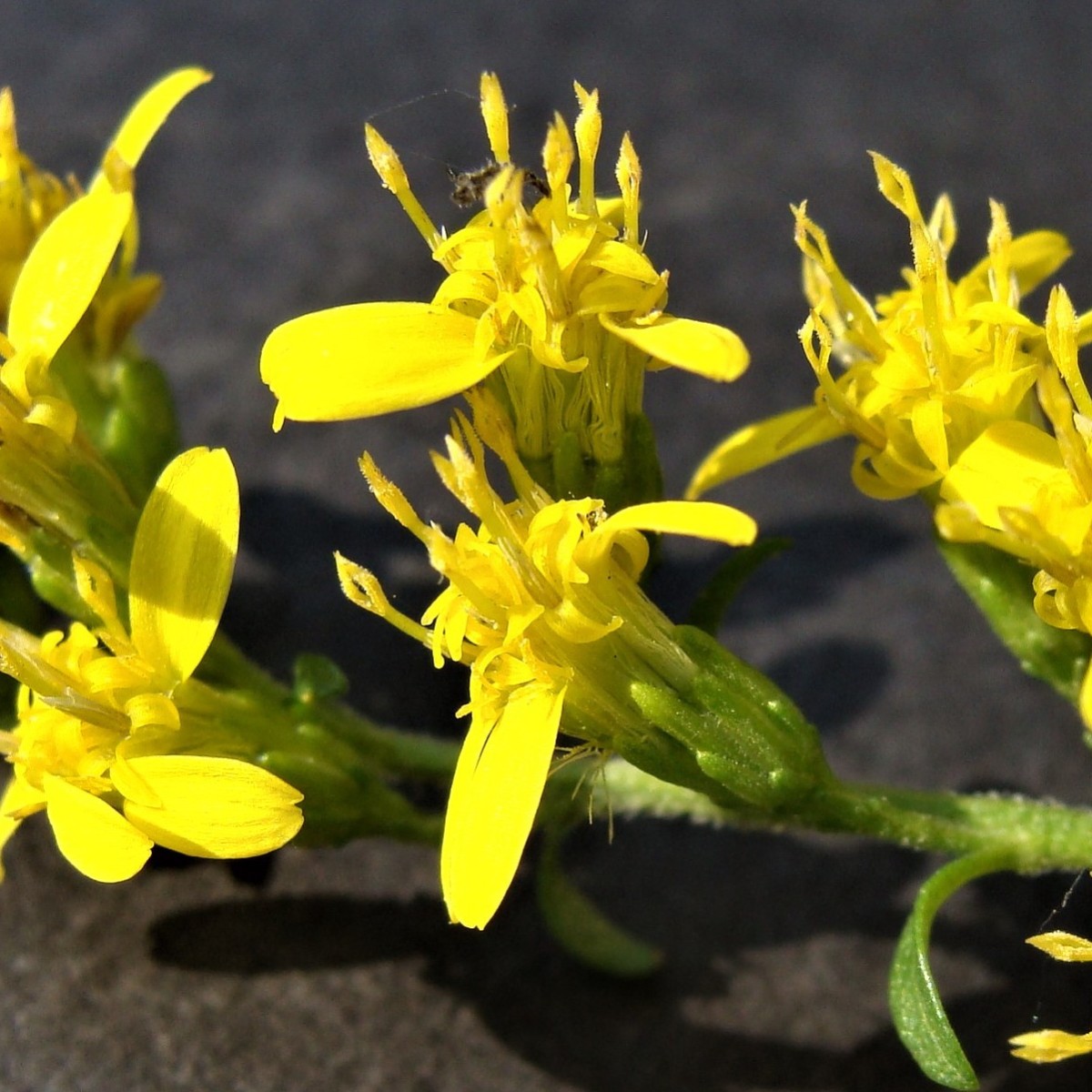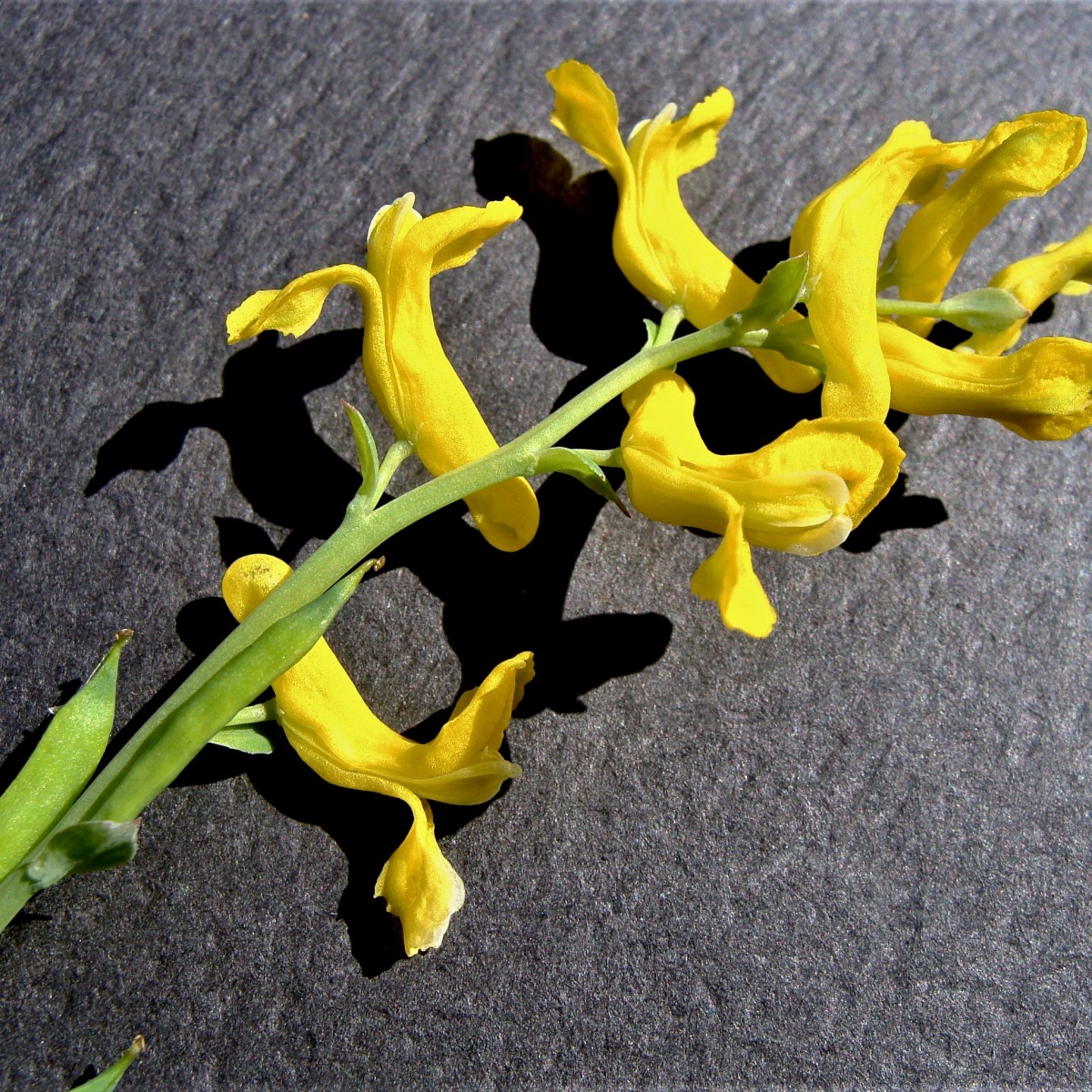Know Your Natives – Harvey’s Buttercup
Harvey’s Buttercup (Ranunculus harveyi var. harveyi*) of the Buttercup (Ranunculaceae) family has an open structure and a succulent appearance. The genus name, based on Latin words for “frog” (rana) and “little” (unculus) relates to the occurrence of many buttercups in moist habitats. The specific epithet honors Francis LeRoy Harvey, faculty…
Know Your Natives – Yellow Honeysuckle
Yellow Honeysuckle (Lonicera flava) of the Honeysuckle (Caprifoliaceae) family is a twining vine with terminal clusters of yellow tubular flowers favored by swallowtail butterflies. The genus name honors Adam Lonicer* a German physician, botanist, and herbalist of the 16th Century. The specific epithet is Latin for “yellow”. In the U.S.,…
Know Your Natives – Hooked Buttercup
Hooked Buttercup (Ranunculus recurvatus var. recurvatus*) of the Buttercup (Ranunculaceae) family, one of 17 yellow-flowered (sometimes white) buttercups in Arkansas, has achenes (fruits) with prominently hooked beaks. The genus name is based on Latin words “rana” meaning frog and “unculus” meaning little and relates to the occurrence of many buttercups…
Know Your Natives – Ozark Sunflower
Ozark Sunflower (Helianthus silphioides) is a tall herbaceous perennial with large simple leaves and composite flowers with a purplish brown central disk and bright yellow ligules. The genus name is based on Greek words for sun (helios) and flower (anthos). The specific epithet notes that appearance of flowers and involucre…
Know Your Natives – Sweet Coneflower
Sweet Coneflower (Rudbeckia subtomentosa) of the Aster family (Asteraceae) grows to 3-5 feet tall and has entire to lobed leaves. The genus name honors “Olof Rudbeck the Younger”, a Swedish botanist*. The specific epithet is Latin for “somewhat hairy” to denote its leaf pubescence. Sweet Coneflower occurs in a broad…
Know Your Natives – Common Evening Primrose
Common Evening Primrose (Oenothera biennis) of the Evening Primrose (Onagraceae) family is a large edible plant noted for its historic and current-day medicinal uses. The genus name is believed to be based on Greek words for “wine” (oinos) and “seeker” (thera). The specific epithet refers to the plant’s typical biennial…
Know Your Natives – Old Field Cinquefoil
Old Field Cinquefoil (Potentilla simplex*) of the Rose (Rosaceae) family is a low-growing plant with short rhizomes and 5-petal, bright yellow flowers. The genus name is from the Latin word for “powerful” in reference to medicinal properties of some species of the genus. The specific epithet is Latin for “simple”…
Know Your Natives – Hispid Buttercup
Hispid Buttercup (Ranunculus hispidus var. hispidus*) of the Buttercup (Ranunculaceae) family is an upland perennial forb with mostly 3-part basal and stem leaves and has soft spreading (bristly) pubescence on stems and petioles. The genus name is from the Latin for “little frog,” because many buttercups live in moist habitats.…
Know Your Natives – Downy Ragged Goldenrod
Downy Ragged Goldenrod* (Solidago petiolaris**) of the Aster, Sunflower, or Composite (Asteraceae) family has stiff lanceolate leaves on unbranched stems that are topped by an unusually large array of golden-yellow flower heads. The genus name is based on the Latin solidus, meaning “whole,” in reference to purported health benefits of…
Know Your Natives – Mexican Hat
Mexican Hat (Ratibida columnifera) of the Aster, Sunflower, or Composite (Asteraceae) family is a perennial species that has flowerheads with a columnar central receptacle (disk). The origin of the genus name, coined by the eccentric naturalist Constantine Rafinesque-Schmaltz, is not entirely clear, although it may be a modification of a…
Know Your Natives – Betony-Leaf Noseburn
Betony-Leaf Noseburn (Tragia betonicifolia) of the Spurge (Euphorbiaceae) family is a perennial monoecious forb that is well-clad in stinging hairs. The genus name honors Hieronymus Tragus (aka Hieronymus Bock, a 16th-century German botanist). The species epithet is Latin for “betony leaved” and associates the appearance of leaves of this species…
Know Your Natives – Prairie Ragwort
Prairie Ragwort (Packera plattensis, formerly Senecio plattensis) of the Aster, Sunflower, or Composite (Asteraceae) family is an herbaceous perennial with felty, white stem hairs and attractive, yellow, radiate flower heads. The genus name honors Canadian John G. Packer, author of Flora of Alberta. The epithet refers to the range from…
Know Your Natives – Early Buttercup
Early Buttercup (Ranunculus fascicularis) of the Buttercup (Ranunculaceae) family is a late winter, herbaceous perennial, with glossy yellow flowers and tuberous, thickened roots. The genus name is from the Latin for “little frog,” based on the occurrence of many buttercups in moist habitats. The specific epithet is Latin for “clustered,”…
Know Your Natives – Yellow Meadow-Parsnip
Yellow meadow-parsnip or smooth meadow-parsnip (Thaspium trifoliatum var. aureum) of the Carrot (Apiaceae) family has small yellow flowers with in-turned petals, much like those of the golden-Alexanders (Zizia aptera and Zizia aurea) (see last paragraph). The genus name, coined by Thomas Nuttall, is a play on Thapsia, a related genus…
Know Your Natives – Hairy Woodland Sunflower
Hairy woodland sunflower (Helianthus hirsutus), of the Sunflower, Aster, or Composite (Asteraceae) family, is one of three Arkansas species with the common name “woodland sunflower.” The genus name is based on Greek words for “sun” and “flower.” The specific epithet is Latin for “hairy” or “bristly.” In the U.S., hairy…
Know Your Natives – Woodland Agrimony
Woodland agrimony (Agrimonia rostellata) of the Rosaceae (Rose) family has leafy stems terminating with a raceme(s) of small yellow flowers. The genus name is a corruption of Argemone, the botanical name of the prickly poppy. The specific epithet is based on a Latin word for “beaks,” in reference to the…
Know Your Natives – Snoutbean
Snoutbean (Rhynchosia latifolia) of the bean or legume (Fabaceae) family is a perennial herbaceous plant with large trifoliate leaves. The genus name is from the Greek for “beak,” referring to the shape of the keel petals. The specific epithet is from the Latin for “broad leaves.” Snoutbean occurs from eastern…
Know Your Natives – Sundrops
Sundrops* (Oenothera fruticosa) of the Evening Primrose (Onagraceae) family has bright yellow flowers open during the day. The genus name may be from Latin (oenothera) for a sleep inducing plant or from Greek (onothera) a hypnotic plant added to wine. The specific epithet is based on Latin for “bushy”. In…
Know Your Natives – Yellow Pimpernel
Yellow pimpernel (Taenidia integerrima) of the Parsley or Carrot (Apiaceae) family is an elegant and attractive herbaceous perennial with twice-compound leaves and compound umbels of tiny yellow flowers. The genus name comes from the Greek taenidion, “a small band,” referring to the scarcely prominent ribs of the fruit. The specific…
Know Your Natives – Round-leaf Ragwort
Round-leaf ragwort (Packera obovata, formerly Senecio obovata), of the Aster, Sunflower, or Composite (Asteraceae) family, is an herbaceous clonal species that bears bright yellow daisy-type flowerheads in early spring. The genus name honors John G. Packer, author of Flora of Alberta. The specific epithet, from Latin, means obovate (egg-shaped, but…
Know Your Natives – Large-Flower Bellwort
Large-flower bellwort (Uvularia grandiflora) of the Bellwort (Colchicaceae) family, formerly of the Lily (Liliaceae) family, is a clump-forming herbaceous perennial with dangling yellow flowers. It occurs in the U.S. primarily from the Ouachita Mountains to northern Minnesota, east to New York, and thence south and west along the Appalachian Mountains…
Know Your Natives – Boott’s Goldenrod
Boott’s goldenrod (Solidago arguta subsp. caroliniana var. boottii*) of the Aster or Sunflower (Asteraceae) family is a medium-size goldenrod with large ovate-lanceolate basal leaves. The genus name is from Latin for “to make whole” or “to heal” in reference to purported health benefits derived from some species of the genus.…
Know Your Natives – Tall Coreopsis
Tall coreopsis or tall tickseed (Coreopsis tripteris) of the aster or sunflower family (Asteraceae) is the tallest of eight coreopsis species native to Arkansas. It occurs primarily from eastern Texas north to Iowa and Wisconsin and east to Pennsylvania and the Florida panhandle. In Arkansas, it grows throughout much of…
Know Your Natives – Southern Corydalis
Southern corydalis (Corydalis micrantha subsp. australis)* of the Poppy (Papaveraceae) family, formerly of the Fumitory (Fumariaceae) family, is an over-wintering annual that reproduces both sexually (chasmogamous flowers, which are cross-pollinated) and asexually (cleistogamous flowers, which are self-pollinated). In the U.S., it occurs from Texas and Louisiana, north to Kansas and…
Know Your Natives – Celandine Poppy
Celandine poppy or wood poppy (Stylophorum diphyllum) of the Poppy (Papaveraceae) family is a herbaceous perennial that bears bright yellow flowers in early spring. The genus name is from the Greek for “style” and “bearing” in reference to the flower’s distinctively long style. The specific epithet is also from the…
Know Your Natives – Wreath Goldenrod
Wreath goldenrod (Solidago caesia) of the Aster or Sunflower (Asteraceae) family is one of the smaller goldenrods that occur in Arkansas. In the U.S., it is found from Texas to Wisconsin and thence east to the Atlantic and Gulf Coasts. In Arkansas, it occurs across the state except for portions…
Know Your Natives – Gum plant
Gum plant (Grindelia lanceolata) of the Sunflower (Asteraceae) Family is a viscid (sticky) plant with thick leaves. The genus name recognizes the early 19th-century Russian botanist, David Grindel. The specific epithet refers to the lance-shaped leaves. In the U.S., the species ranges from New Mexico to Ohio and Kentucky, as…
Know Your Natives – Clammy groundcherry
Clammy groundcherry (Physalis heterophylla) of the Nightshade (Solanaceae) family is one of eleven species (with one having two varieties) of the genus occurring in Arkansas, with a twelfth species currently being described new to science. It occurs naturally throughout much of the continental U.S., except for the far West. In…
Know Your Natives – Eastern Prickly Pear
Eastern prickly pear (Opuntia humifusa, formerly Opuntia compressa)* of the Cactus (Cactaceae) family is a mostly prostrate stem-succulent with large, bright yellow, spectacular flowers. Like most members of its family, the species is adapted to thrive in arid habitats. Interestingly, the cactus family (with the exception of a single species)…
Know Your Natives – Jerusalem Artichoke
Jerusalem artichoke* (Helianthus tuberosus) of the Aster (Asteraceae) family is a large, tuber-producing perennial that was an important food source for Native Americans and early settlers. The genus name combines two Greek words for “sun” and “flower”. The specific epithet is from Latin and means “with tubers”. This species occurs…
Know Your Natives – Yellow Leafcup
Yellow leafcup (Smallanthus uvedalius), formerly Polymnia uvedalia, of the Aster (Asteraceae) family is a tall herbaceous perennial with very large petiolate leaves. The genus name honors John Kunkel Small, American botanist and author of Manual of the Southeastern Flora, 1933–still the most recent comprehensive floristic treatment of the Southeast. The…
Know Your Natives – Showy Partridge Pea
Showy partridge pea (Chamaecrista fasciculata var. fasciculata)* of the Pea/Bean (Fabacaceae) family is an annual forb with asymmetrical flowers. It occurs in the U.S. from New Mexico and Kansas to South Dakota and Minnesota to Maine, thence south and east to the Atlantic and Gulf Coasts. In Arkansas, it is…
Know Your Natives – Ohio Buckeye
Ohio Buckeye (Aesculus glabra) of the Soapberry (Sapindaceae) Family, formerly of the Horsechestnut (Hippocastanaceae) family, is a medium to large deciduous tree with opposite, palmately compound leaves. It is native from central Texas to western Pennsylvania and as far north as central Iowa to southern Michigan and south into northern…
Know Your Natives – Possumhaw
Possumhaw (Ilex decidua) is a deciduous shrub or small tree in the holly (Aquifoliaceae) family that bears showy winter fruit. In the U.S., it is found throughout the Southeast from central Texas to southeastern Kansas, to southern Illinois, east to Maryland, and thence to the coasts. The species occurs statewide…
Know Your Natives – Sweet Everlasting
Sweet everlasting, Pseudognaphalium obtusifolium (formerly Gnaphalium obtusifolium), of the Aster (Asteraceae) family is an herbaceous annual. In the U.S., it occurs from Texas to Nebraska to Minnesota and thence east and south to the coasts, including most of Arkansas. Natural habitats are mesic to dry sandy areas in prairies, glades, open…
Know Your Natives – Woodland Sunflower – Helianthus divaricatus
Helianthus divaricatus, another species known by the common name woodland sunflower, of the Aster (Asteraceae) family, is a deciduous, rhizomatous perennial that occurs in the U.S. from Louisiana to Oklahoma to Wisconsin thence east and south to the borders. In Arkansas, this species is recorded from throughout much of the state…
Know Your Natives – Woodland Sunflower – Helianthus strumosus
Helianthus strumosus, known by the common name pale-leaf woodland sunflower or just woodland sunflower (a general name also used for several other native species of sunflowers), of the Aster (Asteraceae) family, is a deciduous rhizomatous perennial which occurs throughout the eastern U.S. from eastern Texas and North Dakota to the Atlantic and Gulf Coasts. …
Know Your Natives – Cut-Leaf Coneflower
Cut-leaf coneflower (Rudbeckia laciniata var. lanciniata) of the Aster (Asteraceae) family occurs across the eastern U.S. to North Dakota and New Mexico. In Arkansas, it occurs primarily in the Ouachita and Ozark Mountains. The genus name established by Carl Linnaeus (developed binomial nomenclature in 18th century) commemorates his professor O.O. Rudbeck.…
Know Your Natives – Brown-Eyed Susan
Brown-eyed Susan (Rudbeckia triloba var. triloba) of the Aster (Asteraceae) family occurs naturally in the U.S. from Texas to Nebraska and Minnesota, then east and south to the borders, as well as apparently introduced in Colorado and Utah. In Arkansas, this species (the only variety of the species in the…
Know Your Natives – Spicebush
Spicebush (Lindera benzoin) of the Laurel (Lauraceae) family occurs in the U.S. from Texas to Nebraska to Michigan thence east and south. In Arkansas, the species occurs statewide. The genus name recognizes 18th century Swedish botanist, Johann Linder. The specific epithet derives from the Arabic for “aromatic gum.” Other common…
Know Your Natives – Strawberry Bush
Strawberry bush (Euonymus americanus) of the Bittersweet (Celastraceae) family is also known as hearts-a-bursting-with-love, bursting-heart and brook euonymus. It is found in the eastern U.S. from Texas to Illinois to New York and south to the borders, including throughout most of Arkansas. Its natural habitat has moderately moist soil and…
Know Your Natives – Yellow wingstem
Yellow wingstem or yellow ironweed (Verbesina alternifolia) of the aster (Asteraceae ) family is found in the U.S. from Texas to Nebraska to Wisconsin and thence east and south. In Arkansas, the species is found throughout much of the state, though is less frequent in the Mississippi Alluvial and West Gulf…
Native Plant Portrait – Climbing-dogbane
Blooming now! The climbing-dogbane vine (Trachelospermum difforme) can easily be mistaken for Carolina jasmine (Gelsemium sempervirens) when out of bloom. The opposite leaves on climbing-dogbane are similar, but slightly broader and not as thick, and have milky sap when compared to Carolina jasmine. Text and photographs by ANPS member Michael…

